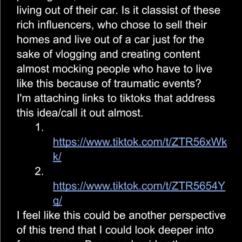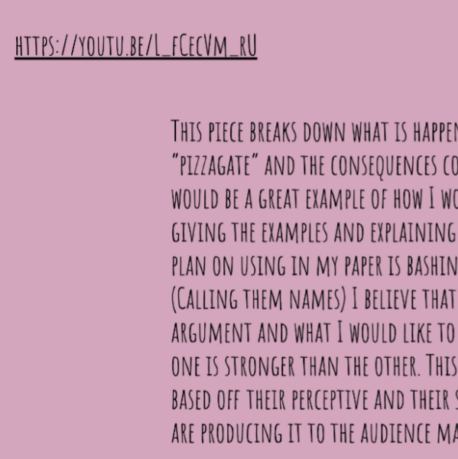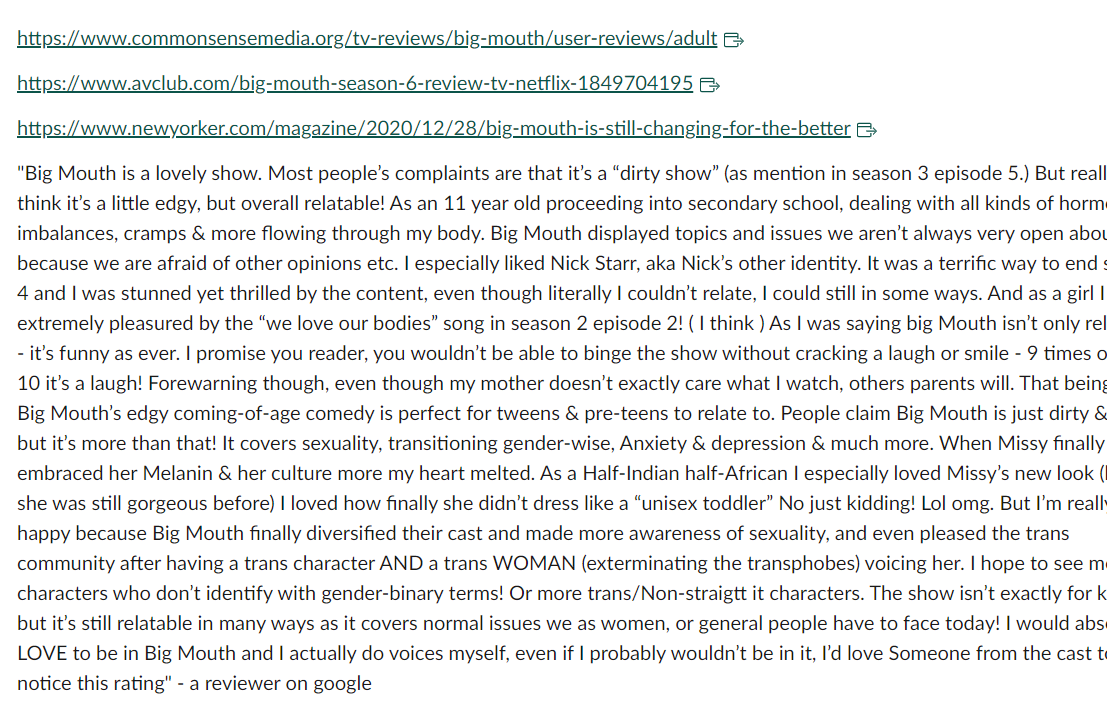
design journal 3 (Dj-3)
plan
Project 1– “Making a Thing” asked students to identify a problem or issue of their choosing, not assigned by the instructor. Then, they were to develop an original artifact that attended to the problem or issue address fellow peers in our classroom.
Responding to outside artifacts that addressed the same problem, selected by the student, was the goal of the 3rd Design Journal. During the first pass, students may have believed external sources to have handled the content well; however, in subsequent passings students were directed to critique the rhetorical work of the artifact so as to inform choices in their own projects.
excerpted from class recording
Project 2– “Pulling a Thing Apart” asked students to break an existing artifact down to a set of features or components for rhetorical analysis. The subject matter could depart from the content of Project 1.
Design Journal 3 provided a space where students could qualify critiques and analyses written on the same subject matter, problem or issue as their selected artifact for Project 2. For instance, if a student selected a music video that addressed gun violence in America to analyze in Project 2, then the student could locate published reviews for the same music video, The student would be able to read the review and think about how the review it operated as a critical text on the issue. The student should determine if the reviewer was successful in developing a position that supported the argument being made by the musician. Ideally, this journal entry would function much like interrogating a model text in order to make decisions about their own analysis essay.
Project 3– “Discussing Things” asked students to resituate the kind of work they had done previously in Projects 1 and 2 by creating a new artifact that performed an argumentative function in a public space. Students were expected to employ some of the rhetorical strategies analyzed in Project 2 by other producers
The 3rd Design Journal was a pivotal step in designing the 3rd Project as crafting an effective argument requires careful planning and organizing. The journal entry intended for students to examine the structure of other argumentative artifacts, so that they could recognize effective strategies and methods. Then, students could use effective artifacts as a model for their own work. For example, if a student read a moving editorial on local initiatives to grow produce for underserved communities, then the student might think about the importance of their own personal perspective on the matter and how to incorporate their perspective to affect their reader.
Project 4– “Putting a Thing Back Together, Better” asked students to return to their work in project 1 equipped with a fresh set of knowledge, tools, and inspiration. They had to redesign their Project 1 by choosing a new modality and new target audience for the redesigned artifact.
The nature of the 4th project demanded that the 3rd Design Journal take on a different role from previous projects. Students had already moved through a 1st iteration of their project and had a solid sense of what worked and what failed for their audiences. When students were asked to determine a new mode and new target audience for a redesign of Project 1, students could use the space in Design Journal 3 to critique artifacts that did work similar to what they planned for Project 4. Students could also, and more importantly, organize and plan individual elements of the 4th project. For instance, in Project 1 a student may have developed a website to advocate for sex trafficking awareness. The site included an interview segment with a survivor and intended for mature audiences. The student may later decide that splicing the interview into smaller, more profound clips would be a powerful means to redesign an element of the web site into a TikTok for adolescent viewers. In the 3rd Design Journal, the student would have space to map this idea and begin sequencing segments and documenting the time stamps in order to plan out the 4th Project.




